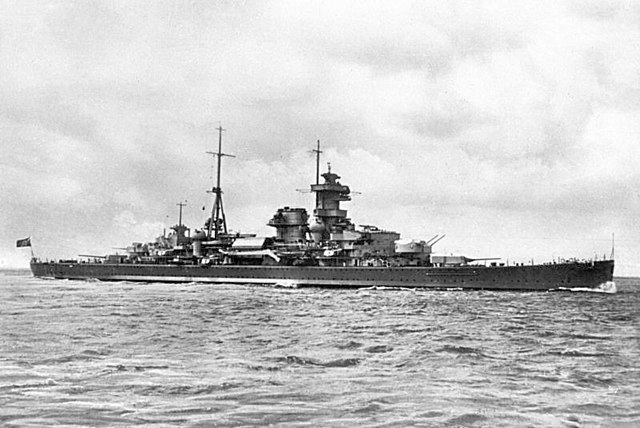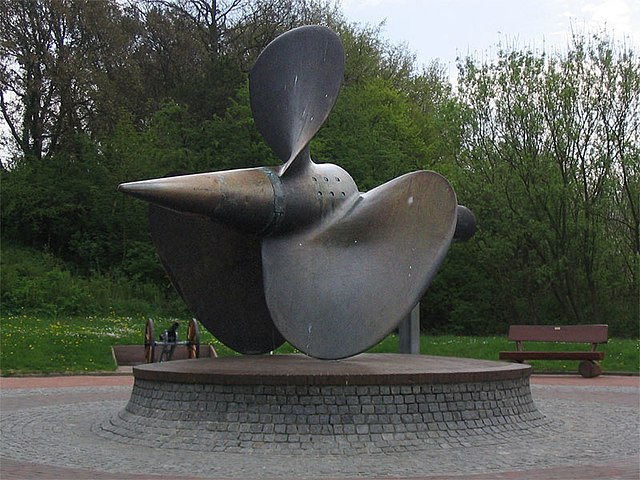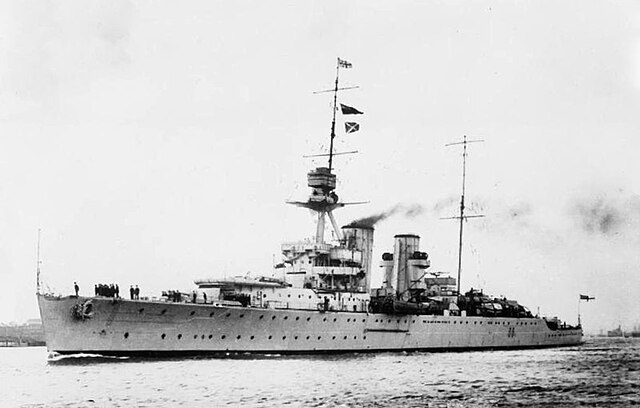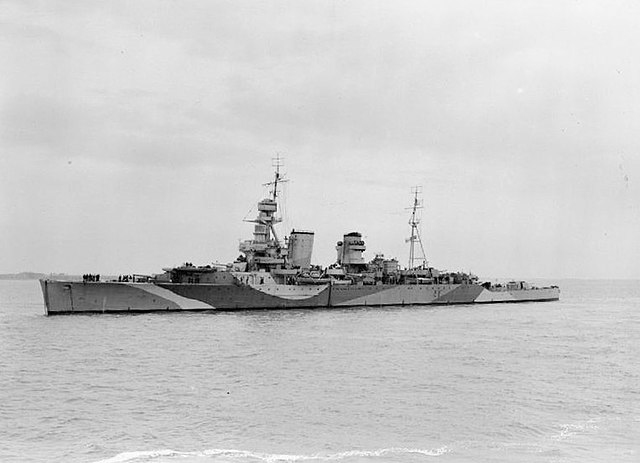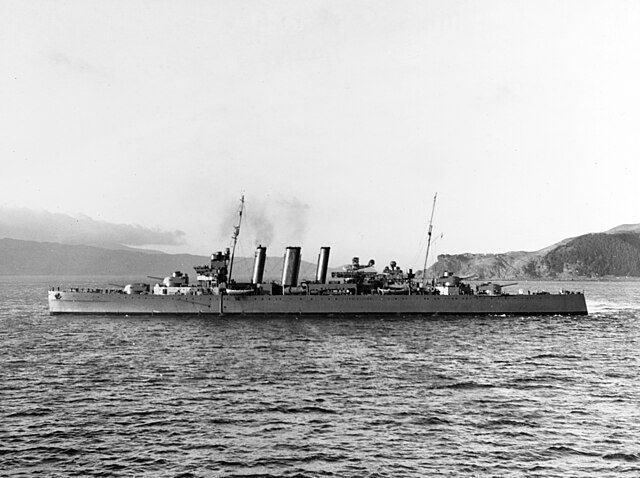Admiral Hipper-class cruiser
The Admiral Hipper class was a group of five heavy cruisers built by Nazi Germany's Kriegsmarine beginning in the mid-1930s. The class comprised Admiral Hipper, the lead ship, Blücher, Prinz Eugen, Seydlitz, and Lützow. Only the first three ships of the class saw action with the German Navy during World War II. Work on Seydlitz stopped when she was approximately 95 percent complete; it was decided to convert her into an aircraft carrier, but this was not completed either. Lützow was sold incomplete to the Soviet Union in 1940.
Admiral Hipper
Recognition drawing of the Admiral Hipper class, showing armament and armor arrangement
One of Prinz Eugen's three-bladed screws on display at the Laboe Naval Memorial
One of Prinz Eugen's 10.5 cm twin AA gun mounts
A heavy cruiser was a type of cruiser, a naval warship designed for long range and high speed, armed generally with naval guns of roughly 203 mm (8 inches) in calibre, whose design parameters were dictated by the Washington Naval Treaty of 1922 and the London Naval Treaty of 1930. Heavy cruisers were generally larger, more heavily-armed and more heavily-armoured than light cruisers while being smaller, faster, and more lightly-armed and armoured than battlecruisers and battleships. Heavy cruisers were assigned a variety of roles ranging from commerce raiding to serving as 'cruiser-killers,' i.e. hunting and destroying similarly-sized ships
HMS Frobisher, a Hawkins-class cruiser around which the Washington Naval Treaty limits for heavy cruisers were written.
Armoured cruiser USS Tennessee, armed with four 10-inch (250 mm) guns, ca. 1907
HMS Hawkins, lead ship of her class.
HMAS Canberra, a County-class "treaty cruiser".

